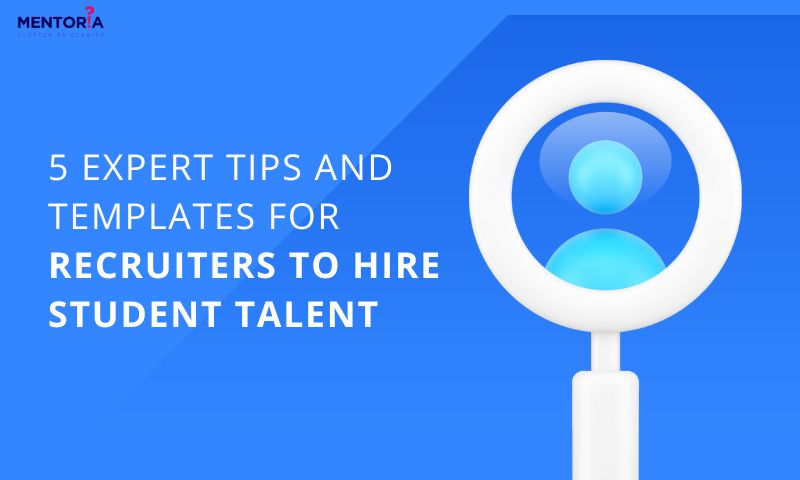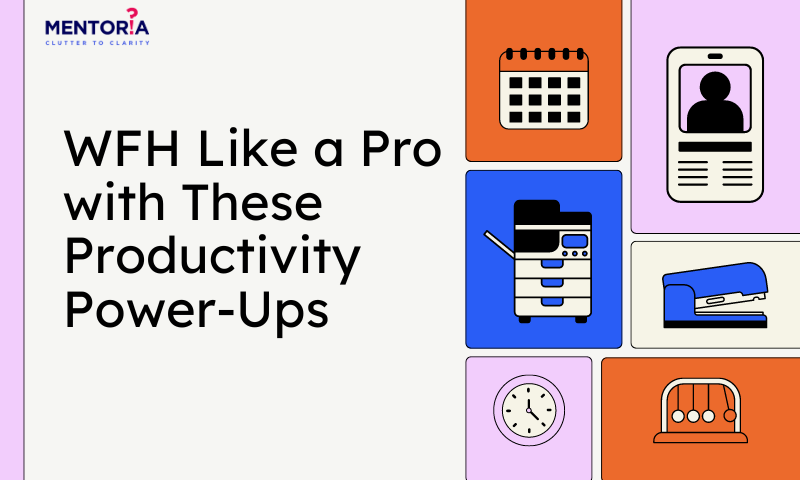5 Expert Tips And Templates For Recruiters To Hire Student Talent

You may not recall the last time you got a message from a recruiter. If it was generic, you probably ignored it or forgot about it. That’s why data shows that students are more likely to reply to messages that seem tailored and relevant to them. And messages are important for the candidate experience: 92% of Gen Zers, the generation that is always online, prefer to communicate with employers by email. Recruiting students isn’t just about shooting off emails or messages—it’s about hitting the right notes to grab their attention and get them excited. Crafting messages that really resonate with students takes a bit of finesse, a dash of understanding what makes them tick, and a sprinkle of personality.
If you want to improve your message engagement with students and recent graduates, follow these five effective tips for customising your outreach. Then, take a look at these 5 recruiting message templates you can use to provide a clear yet engaging message for students you want to target.
Learn About Your Audience
Students today are already doing their homework by checking recruiters out online, and on social media. You should do the same for them.
For example:
Suppose you need to build an early talent pipeline to fill your virtual summer internship programme. You are looking for outstanding students who are studying business, and you know that your employer’s flexible and independent culture is attractive.
With this information in mind, find suitable talent that might be interested in what you have to offer by focusing on candidates who are seeking part-time work or have shown self-reliance through previous work experience. Then differentiate yourself by highlighting those benefits in your outreach. Effective communication is crucial when recruiting students. It involves understanding their interests, motivations, and communication preferences. Tailor your messages to align with their interests and passions, such as technology, arts, social causes, or specific industries. Highlight opportunities that cater to their goals, and adapt your messaging to their preferred channels, such as social media, email, or face-to-face interactions. Showcase your organisation’s values and culture, such as collaboration, diversity, and innovation, and address any challenges they face, such as finding relevant opportunities or understanding career paths. By addressing these aspects, you can tailor your recruiting messages to speak directly to their interests, aspirations, and needs, increasing the chances of grabbing their attention and fostering meaningful connections.
Template:
Internship Opportunity
Subject: Exclusive Internship Opportunity at [Company Name]
Body:
Dear [Student’s Name],
I hope this message finds you well! We at [Company Name] are excited to extend an exclusive internship opportunity in [Department/Area]. This programme offers hands-on experience, mentorship, and a chance to work on impactful projects in a dynamic environment. We believe your [specific skills/experience] would be a great fit for our team.
Key Tips:
- Highlight the unique aspects of the internship.
- Personalise by mentioning the student’s skills or achievements.
- Emphasise the learning and growth opportunities.
Include What Stood Out To You About The Student
Start your message by establishing who you are and why you’re reaching out. Take a peek at students’ profiles to grasp their interests, skills, and affiliations with student organisations. Highlight what intrigued you about this candidate and how their skills align with your organisation’s needs. Explain why you believe they’d flourish within your company and why it’s the ideal launchpad for their career.
Building rapport matters. If your company has hired alumni from their school, mention it—it creates an instant connection. Similarly, if you share a school or another interest, use that common ground to establish a connection. A student’s key qualities to a recruiter include strong academic performance, relevant experience or internships, leadership and extracurricular activities, adaptability and growth mindset, passion and drive, and clear communication and presentation skills. These qualities indicate a student’s potential to contribute effectively to the organisation, adapt to the work environment, and grow within the company. Consistent high grades or achievements in relevant coursework demonstrate dedication and capability to excel in their field.
Practical experience through internships, part-time jobs, or relevant projects demonstrates understanding of real-world applications and a proactive attitude towards learning beyond the classroom. Active involvement in leadership roles or extracurricular activities highlights skills like teamwork, communication, and problem-solving, which recruiters value as they translate well into a professional environment. Adaptability and growth mindset, such as experience with diverse cultures, languages, or technologies, set a student apart. Passion and drive are also highly valued in industries. Identifying these traits helps recruiters select individuals who not only meet job requirements but also bring additional value through their skills and attitudes.
Consider referencing your own early career experiences—it adds a personal touch and shows empathy towards their journey. If you or your colleagues share the same alma mater, mentioning that could significantly increase the likelihood of the student responding positively. Ultimately, infusing your message with relatable experiences can make it more engaging and appealing to students just starting their careers.
Part-Time Job Opening
Subject: Join Our Team – Part-Time Role at [Company Name]
Body:
Hi [Student’s Name],
Looking for a part-time role to gain real-world experience while studying? We’re excited to offer a position at [Company Name]. This role in [Department/Area] will allow you to balance academics and work, develop essential skills, and contribute to meaningful projects. Your knack for [specific skills/traits] aligns perfectly with what we’re seeking!
Key Tips:
- Highlight flexibility and relevance to a student’s schedule.
- Emphasise skill alignment and growth opportunities.
- Showcase how the role contributes to the student’s career goals.
Communicate Authenticity and Honesty
Graduates may feel a range of emotions as they finish almost two decades of education and start their first or second job after college. They are looking for a place where they fit in. If a student shows interest in working at an employer that offers hybrid opportunities and that’s a benefit that you have, mention it in your message! If you want to use a recruiting message to attract students to an upcoming virtual career event, provide useful instructions such as how to join in Q&A sessions, whether or not to turn on cameras, etc. These details can make a lasting impression on students who are looking for guidance and support.
And if emojis are part of your personal style, feel free to use them in your recruiting message. Whatever makes you unique can help you build relationships with students, as well as show that your employer values self-expression. Authenticity and honesty are crucial in professional interactions, especially when communicating with recruiters or anyone in a professional setting. Being genuine means staying true to oneself, values, and experiences. When communicating with recruiters, it is essential to be genuine, share your experiences, skills, and aspirations truthfully, and acknowledge areas where you are still growing or learning. Owning your story and expressing it confidently is also key to authenticity.
Transparency builds trust by acknowledging areas for improvement and discussing how you are working on them. Staying true to values is crucial when finding a company or role that aligns with your values. Active listening and thoughtful responses are also essential for authenticity. Being yourself and presenting the best version of yourself are also essential for authenticity. Authentic communication helps establish a strong foundation for professional relationships, fosters trust, understanding, and often leads to better alignment between candidates and employers in terms of goals and expectations.
Subject: Let’s Connect [Opportunity]
Dear [Candidate’s Name],
I hope this message finds you well. Your interest in the [specific opportunity or position] at [Company/organisation] has caught our attention.
We’re big believers in honest, open communication, and we’ve noticed [specific aspects that intrigued us about your application, e.g., experiences, skills, achievements]. We value your unique perspective and believe it could be a great fit within our team.
Your commitment to growth and development aligns with our focus on [specific values or objectives of the company]. We’re excited about the potential you bring and would love to chat further about how your strengths align with our goals.
Could we schedule a brief conversation to delve deeper into your experiences and aspirations? Your insights could be invaluable to [Company/organisation], and we’re eager to explore this possibility together.
Looking forward to connecting soon,
[Recruiter’s Name]
[Title]
[Company/organisation]
[Contact Information]
Key Tips:
- Appeal to the student’s passion or interest.
- Focus on the impact they can make.
- Highlight skill development and networking opportunities.
Close With A Call To Action
Your recruitment message should conclude with a clear and compelling call to action (CTA) that urges students to take action. A CTA may request that prospects register for a forthcoming career fair or event, apply for an open job or internship programme, or just learn more about your company. It should be focused—don’t confuse your applicants with several CTAs—and contain a hyperlink. You may also wish to highlight and underline content that you want pupils to pay attention to.
Interaction with a candidate should not conclude with a single message. In fact, your initial point of contact should provide the groundwork for a long-term, two-way engagement. Human connection begins the minute a potential candidate learns about your organisation and should not end there. Including a personal remark at the conclusion of your message, such as “I look forward to reviewing your application!” will help you obtain a response. A clear call to action is essential in recruitment messages for several reasons. It guides candidates, encourages engagement, streamlines the recruitment process, and demonstrates professionalism. It directs them on the specific action they should take, eliminating ambiguity and making the next steps clear. It also sets the tone for a proactive and engaging recruitment process, fostering enthusiasm and clarity from the beginning. A well-crafted call to action increases the likelihood of candidates responding, demonstrating the company’s professionalism and organisation.
Subject: Take the Next Step in Your Journey with [Company/organisation]
Dear [Candidate’s Name],
I hope this message finds you well. Your interest in [Company/organisation] has piqued our excitement!
As we progress further, I invite you to [hyperlinked action], whether it’s applying for one of our open positions, RSVPing for our upcoming career fair, or exploring more about our vibrant company culture. Your talents and perspectives align with what we value, and we’re eager to see how they can contribute to our team’s success.
Your engagement is important to us, and I’m here to assist with any enquiries you may have about the application process or our company. I genuinely look forward to the opportunity to connect and explore how your journey can intertwine with ours. Let’s take this next step together!
Best regards,
[Your Name]
[Your Title]
[Company/organisation]
[Contact Information]
Expert Tips:
- Use direct and concise language to prompt a specific action.
- Ensure the desired step is unmistakably communicated.
- Emphasise the value or benefits the student will gain by taking the action.
- Connect the action to how it aligns with their goals or aspirations.
Review Before Sending
Before sending a message, it is essential to ensure accuracy, clarity, professionalism, consistency, error avoidance, and effectiveness. Accurate information, including details about positions, events, or the company, is crucial to avoid misunderstandings. Clear language and tone are also essential to avoid confusion. A well-reviewed message reflects professionalism and attention to detail, creating a positive impression of the sender and organisation. Consistency in tone, style, and formatting is crucial for a cohesive communication approach. Error avoidance helps catch grammatical errors and typos that may distract from the intended message. Finally, effectiveness ensures the message fulfils its purpose, whether it’s to encourage action, provide information, or initiate a conversation.
Research Assistant Position
Subject: Research Assistant Opportunity: Join Our Team at [Research Lab/Institution]
Body:
Dear [Student’s Name],
Your academic prowess in [field/subject] caught our attention! We’re offering an exciting opportunity to join our team as a research assistant at [Research Lab/Institution]. This role involves hands-on research, collaboration with esteemed professionals, and a chance to contribute to groundbreaking projects in [specific area].
Key Tips:
- Highlight academic achievements or specific skills.
- Emphasise the significance of the research work.
- Showcase opportunities for learning and contribution.
Crafting effective recruiting messages to students involves personalised and engaging content. Tailoring messages to highlight specific opportunities, benefits, and the student’s unique skills or interests is key. Utilising clear and concise language, emphasising the value they’ll gain, and prompting a direct call to action encourages immediate engagement. By focusing on clarity, benefits, and simplicity, these messages can effectively resonate with students, inviting them to explore and pursue valuable opportunities.
Promoting Creativity Through Mentoria
Student recruitment is not merely about filling seats in classrooms; it is about investing in the future of individuals and the collective well-being of society. By prioritising effective recruitment strategies, educational institutions can secure their own sustainability and contribute to a brighter future for all. Mentoria’s expert counsellors can help students identify their career goals, develop a plan to achieve them, and navigate the job market. Through Mentoria, students can get adequate information about the job they want to go after, and look at relevant recruiters, avoiding confusion and anxiety at their end.








